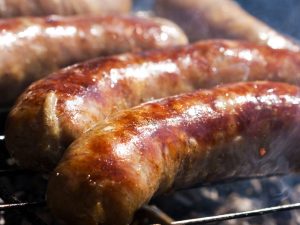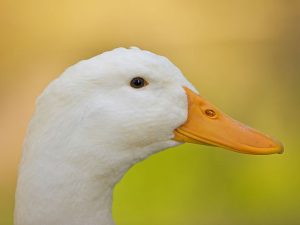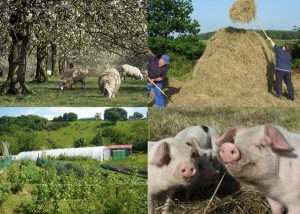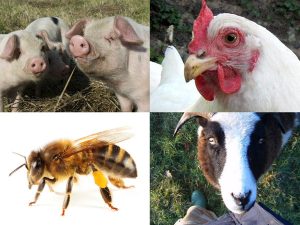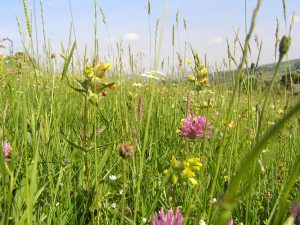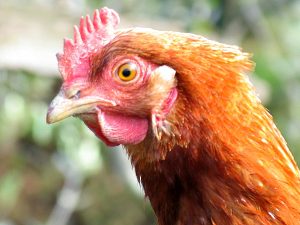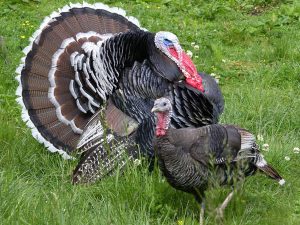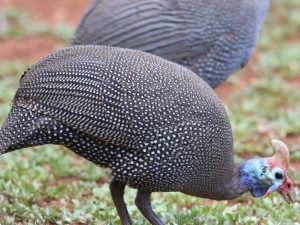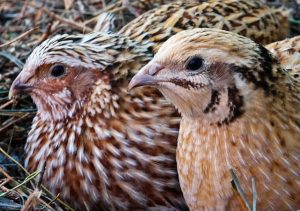Geese - introduction
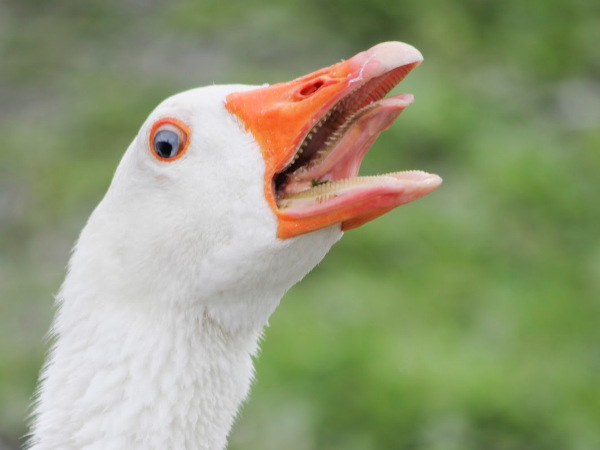
“I like my geese. Like cats, they can’t be told what to do, and like dogs, they’re loyal, and like people, they talk every chance they get” – Shannon Hale
Contents
What are geese?
Geese are large waterfowl, domesticated around 4,000 years ago. They’re kept for eggs, meat and down, and also as guard animals. Most of the domestic geese in Europe are descended from the greylag goose (Anser anser), found throughout Europe, Asia and North Africa. The exceptions to this are the African and the Chinese goose, both descended from the swan goose of Mongolia and China.
Geese are gregarious birds, naturally living in large flocks. They’re intelligent and form strong bonds with their flockmates. For this reason geese sometimes have a reputation for being aggressive. Ganders (male geese), in particular, can be very protective of their flockmates, especially when females are incubating eggs or when young goslings are around. Geese are herbivorous and their natural diet consists mainly of grasses.
What are the benefits of keeping geese?
Self-provisioning / personal
Geese are not difficult to keep and if you have the space to provide them with plenty of grazing they’ll need very little supplemental feeding. A goose can lay 50 beautiful 150g eggs per year, give you meat for the table, plus you can use their down, and they provide lawn mowing and guard animal services. Geese are longer-lived than other poultry, living for around 25 years.
Goose eggs can be used in the same way that you’d use hens’ eggs. They’re 2-3 times larger though, so when baking use one goose egg in place of two large chicken’s eggs. Goose eggs have a proportionally larger yolk than hens’ eggs and have a stronger flavour, which for some people may take some getting used to. They also contain more protein, fat, calories, vitamins and minerals per gram than chickens’ eggs.
Geese won’t scratch up your garden like chickens, or turn it into a muddy mess like ducks. Their droppings don’t smell and will wash away in the rain. Geese are hardy, suffer from few health problems and are well suited to the British climate. They’re particularly suitable for keeping in orchards. They’ll keep the undergrowth down and clear windfalls, turning all those weeds into protein. Young trees do need protection against them, however.

Decentralising power away from corporations
Providing food ourselves in communities means that we don’t have to use supermarkets, which helps prevent extraction and decentralises power away from corporations (which makes it more difficult for them to corrupt democracy).
Building community and preparing for any potential collapse scenarios
In case of any kind of collapse scenario (broken supply chains, environmental destruction, financial crash, war, civil unrest etc.), we’re going to have to look after ourselves in our communities, and so the more people who have the skills to grow food, or keep animals for eggs and meat, the better.
Environmental
Producing food ourselves means lower food miles, less packaging and nasty chemicals, plus use of food scraps and composting of waste.

What can I do?
Getting your geese
There are around 14 breeds of goose commonly kept in the UK, each classed as light, medium or heavy weight. The breeds also vary in their temperament, tendency to go broody (sit on and incubate eggs), noisiness and suitability for raising as meat birds or layers. Many domestic geese are hybrids, which means unpredictable characteristics – but a wider gene pool can mean a healthier and productive life. Read about the different breeds to choose from here.

You can buy goslings, though you’d need to provide them with a heat lamp or plate until they’re at least 5 weeks old. You could also buy older, fully-feathered juvenile geese, or geese of a year or 2 old which will already be laying. One more option is to buy retired breeding stock. These geese will still have many more years to live and will still be fertile enough for you to start your own flock.
If you can’t find the breed you want, buying fertile eggs is also an option. Incubating and hatching eggs is not hard to do with a little research. You’ll need to buy an incubator and a heat lamp. You’ll also need an indoor space for the goslings until they’re ready to go outside, although this could be a draught-proof shed. If you’ve previously hatched chicks, bear in mind you’ll need more space for both the eggs and the goslings. Hand-rearing goslings can help ensure you have friendly geese and reduce problems with aggression; this may be particularly important if you have small children.
Introducing new geese to a flock can be difficult so, if possible, buy all your geese at once. It’s usually possible to keep more than one gander in a flock. If you keep more than 3 geese (or 5 of a light breed), and you want to breed them, you’ll likely need more than one gander to maintain fertility rates.

Housing
Geese need shelter at night, in a well-ventilated housing, secure from predators. A pair of geese should have at least 1.5m² of floor space; for a small flock, a small garden shed is often ideal. Geese don’t instinctively go into their house at night as chickens do, but they can be easily herded into it. If you provide them with 2ft square nest boxes filled with bedding they’re more likely to lay their eggs in the house. However, some still seem to prefer to make their own nests outside. Geese will sometimes bury their eggs so, even in their house, you may need to hunt for them under the bedding.
Domestic geese usually don’t fly much, and flying is most likely to occur in the lighter breeds or with younger birds. Once you’ve chosen your breed it’s worth seeking out other keepers and finding out if they have problems with geese flying out of their enclosure, and what their fencing solutions are. Even geese that do fly are very unlikely to fly away if their needs are met. If you need to keep them contained, a 1m fence is usually sufficient. Even a lower barrier may provide enough deterrence (to prevent them trampling your veggies for example).
Geese don’t need a pond. They spend much less time on water than ducks, but they’ll appreciate a small pool such as a baby bath or child’s sand pit.
Feeding
If you have a big enough area of good-quality grass, geese will need no supplementary feeding during the spring and summer. A quarter of an acre is usually enough for 2 geese. When extra feed is needed, geese are usually given wheat, often in a bucket of water. They prefer grass that is relatively short and for that reason are sometimes grazed on a rotation with larger animals such as cows.
If you don’t have sufficient grass for your geese in the spring or summer you can buy pellets – commercially-produced compound feed containing all the nutrients a laying goose needs. You should also provide all geese with grit, and all laying geese with oyster shell. As with all waterfowl, it’s important that they have access to plenty of clean drinking water at all times.
Geese enjoy vegetable scraps. However, bear in mind it’s illegal to feed poultry vegetable scraps which have been processed through a kitchen.

Health
Geese, like ducks, tend to be quite healthy and suffer from fewer problems than chickens. Gizzard worms are the most common problem in geese and the most common cause of death in goslings. It’s therefore a good idea to worm all goslings at 12 weeks old, even if you’re otherwise trying to minimise treatment using pasture rotation and fecal egg counts.
For adult geese, six-monthly treatment for worms is recommended, in autumn and spring. If you want to avoid chemical wormers to avoid contributing to the problem of resistance to medications, you can perform a faecal egg count (FEC) on your geese to check if they need to be wormed. You can do this yourself if you have a microscope, or you can buy a kit and send off a sample. Here’s more info on fecal egg counts.
The build-up of parasites can be minimised by ‘pasture rotation’ – periodically moving your geese to a clean area of grazing. If you’re trying to minimize treatment it’s particularly important to familiarise yourself with the symptoms of gizzard worm and gape worm. Geese rarely need treatment for external parasites if they’re otherwise healthy and have access to clean water.
As with all livestock, check your flock every day and find a good vet who can be contacted in an emergency.

Meat production & slaughter
It’s legal to slaughter geese at home for consumption by yourself and your immediate family provided it’s done humanely. Geese, however, are more difficult to dispatch than smaller poultry and there are more restrictions on the methods that can be used, particularly for birds over 5kg. See the Humane Slaughter Association for more information.
Geese are probably the hardest poultry to pluck. You can make things easier for yourself by plucking them straight after a moult when no pin feathers are present. This is usually at around 9, 15 or 20 weeks of age. Slower growth after 17 weeks means that 15 weeks is often the preferred age for slaughter.
For the smallholder, supplying small numbers of birds directly to consumers or to local retailers, it’s also possible to slaughter and process your birds on farm, although you must register with your local authority. The Humane Slaughter Association is a good source of information on methods, equipment and courses to attend.
If you plan to produce meat for sale and you slaughter the birds yourself, or send them to a slaughterhouse but take on the butchery yourself, you’ll need to follow hygiene regulations and have your premises inspected by Environmental Health on a regular basis. Contact the Food Standards Agency for further information.

Paperwork and regulations
You have to register with DEFRA and standard regulations apply if you keep more than 50 birds (including other types of poultry). There are no regulations for keeping fewer than 50 birds other than the general rules and regulations covering animal welfare.
Further resources
- The Domestic Waterfowl Club: lots of info and sections for each breed
- British Waterfowl Association: education and conservation, events, books, breeders, shows and information leaflets
- Poultry Pages: geese diseases and problems
- Raising Geese: 28-page pdf
Thanks to Lesley Anderson of Permaculture Scotland for information.

